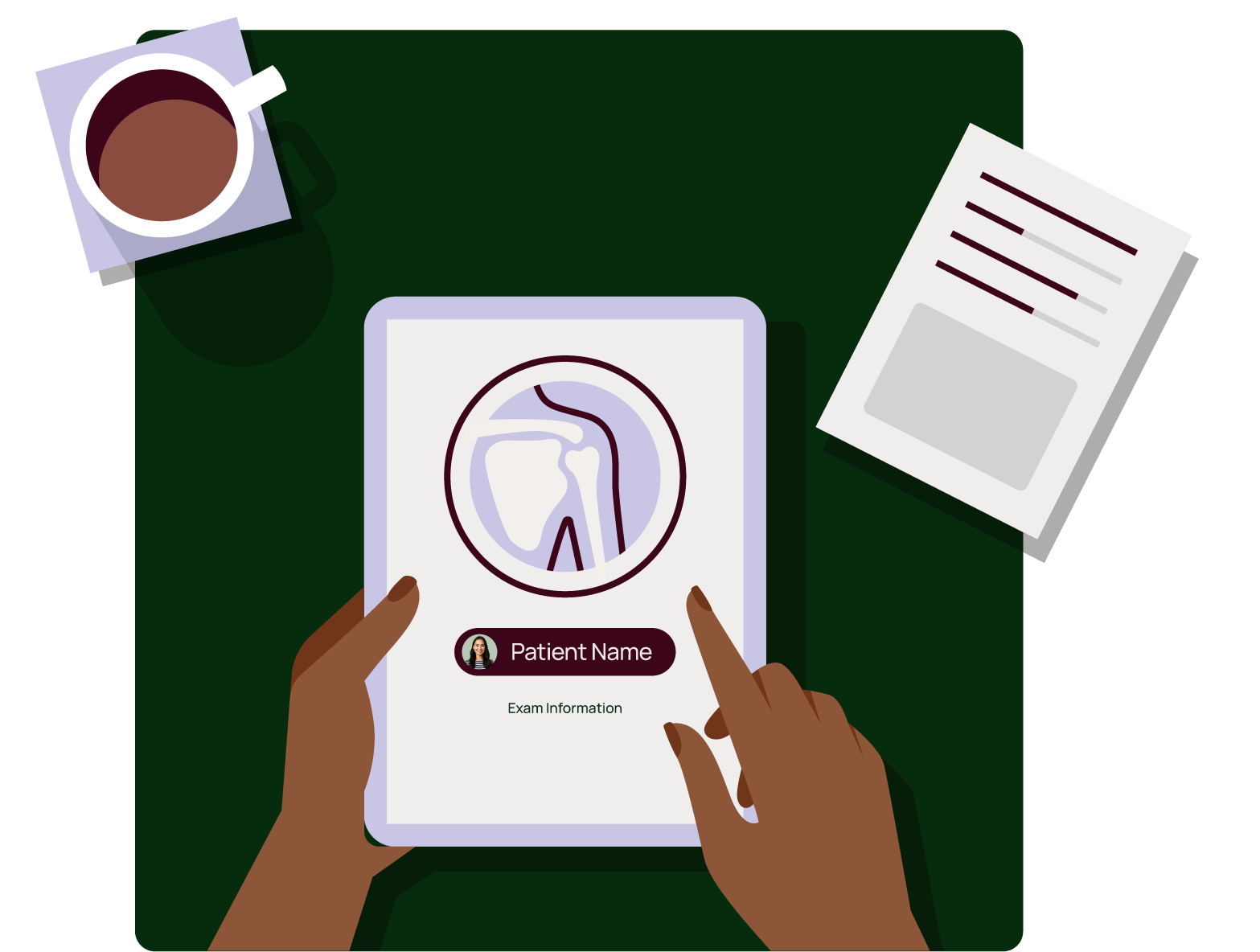Today’s patients expect healthcare to be digital, connected, and accessible. Medical imaging often lags in this area when it is being slowed by outdated infrastructure, manual processes, and disconnected systems.
To close the experience gap, medical imaging must evolve, and technology is the key to making it more accessible, efficient, and patient-centered.
Imaging Hasn’t Kept Pace with Technological Advancement
Many imaging workflows still rely on outdated infrastructure and manual processes that make it difficult for patients to access their records, share them across providers, and stay informed about their care.
Even facilities with digital platforms often fall short in execution. A 2022 survey of U.S. children’s hospitals found that 78% had electronic image-sharing platforms, yet 27% still reported daily difficulties exchanging images. The main reasons cited were ongoing reliance on CDs (67%) and lack of interoperability across platforms (51%).
You may be asking: why the disconnect? Because having a digital platform doesn’t mean the ecosystem is truly connected. CDs persist because of external limitations like partners that lack digital access, incompatible systems, and outdated workflows that have not caught up to modern technology.
For patients, this means delays, repeated scans, and limited visibility into their care. This becomes a significant barrier to on-demand access and image sharing across providers.
At a time when experience and efficiency matter more than ever, imaging’s lag in modernization has real consequences. For health systems, it weakens care coordination, lowers patient satisfaction, and contributes to avoidable delays in diagnosis and treatment.
Technologies That Put Patients First
Meeting modern patient expectations can seem daunting, but a complete system overhaul isn’t the only answer. Smarter tools that are strategically implemented close the gaps between radiologists, providers, and patients. By eliminating friction and improving access, imaging becomes a collaborative part of the care experience.
So, how do Intelerad’s solutions help health systems and radiology groups make imaging more patient-centric?
- Replace CDs and give patients direct access to imaging with InteleShare™. Intelerad’s image-sharing network eliminates the need for physical media by offering digital access via links, QR codes, or patient portal integrations with Electronic Health Record (EHR) systems such as Epic MyChart and Cerner Millennium. This allows patients to view and share their studies instantly.
- Improve follow-up and accountability with InteleScreen™.
InteleScreen, specifically designed for breast and lung imaging organizations, automatically flags incidental or critical findings that require follow-up and track them through to resolution. This helps close the communication loop between providers and patients, reducing the risk of missed findings for better outcomes.
- Support collaborative, real-time care decisions with Enterprise Viewer™.
Intelerad’s zero-footprint universal viewer powers collaboration with in-context messaging and video conferencing tools that allow providers to discuss studies in real time, without leaving the viewer. Whether it’s a radiologist consulting with a referring physician or a care team reviewing complex findings together, these tools make communication faster, clearer, and more coordinated.
- Enhance the entire diagnostic workflow with AI through InteleGence™.
InteleGence integrates curated AI applications directly into the imaging workflow. Applications range from triage and detection to clinical findings and reporting. Whether it’s prioritizing emergent cases, flagging incidental findings, or pre-populating reports with structured results, InteleGence enables radiologists to work faster and with greater confidence.
- Integrate imaging data into your existing workflows and EHRs
Intelerad’s third party integrations and cloud-ready architecture ensure imaging data flows into the systems patients and providers already use, creating a unified experience without forcing a rip-and-replace deployment.
By addressing key gaps in medical imaging such as access, speed, visibility, and follow-up, Intelerad’s solutions help radiology teams deliver a more transparent and patient-centered experience without overhauling core infrastructure.
The Impact of Connected Care
Patient-centered imaging improves care at every touchpoint. When patients can access their records, trust the process, and receive timely answers, their experience improves. But the benefits carry over into operations, too.
Modernizing the imaging experience reduces unnecessary repeat scans, lowers manual workloads, and minimizes legal and reputational risk from missed follow-ups. Automated sharing, AI-supported workflows, and better collaboration tools accelerate time to diagnosis, helping health systems do more with the resources they have.
These changes translate into measurable outcomes:
- Higher patient satisfaction and loyalty
- More efficient resource utilization
- Stronger referral relationships
- Reduced operational costs
- Infrastructure that is ready to grow with your organization
These foundational improvements position imaging as a strategic asset rather than a technical bottleneck. By aligning radiology with broader organizational goals like patient satisfaction, operational efficiency, and long-term scalability, health systems can unlock more value from an often under-optimized area of the enterprise.
Imaging That Moves Your Organization Forward
As expectations shift and competition increases, organizations that treat imaging as a competitive differentiator will be the best positioned to grow, scale, and retain trust. Intelerad’s solutions give you the flexibility to modernize imaging without disruption and the visibility to align that transformation with your system’s long-term objectives.
Whether you’re ready to move forward or just exploring what’s possible, we’re here to help. Contact us today to start the conversation or schedule a demo with our team.





